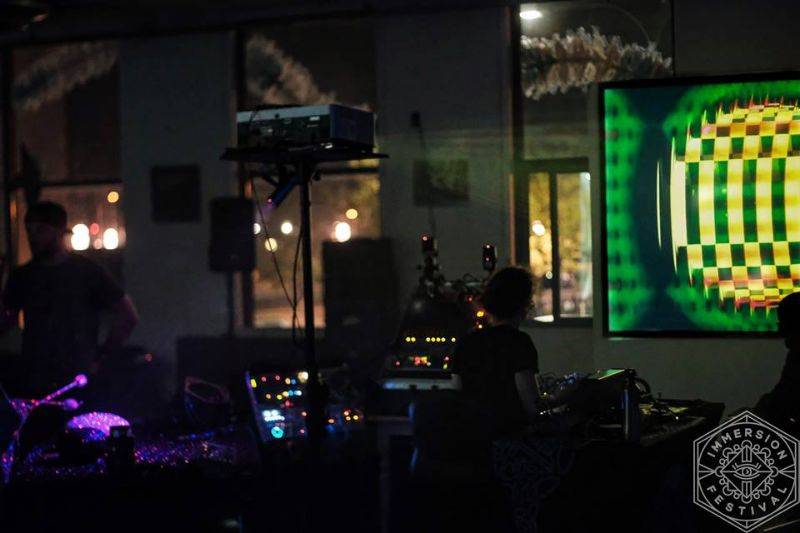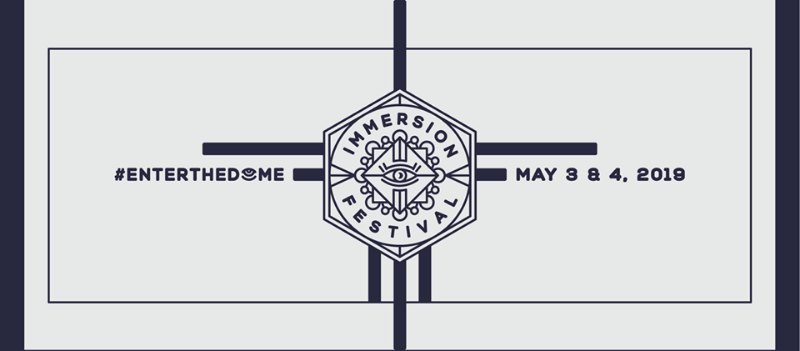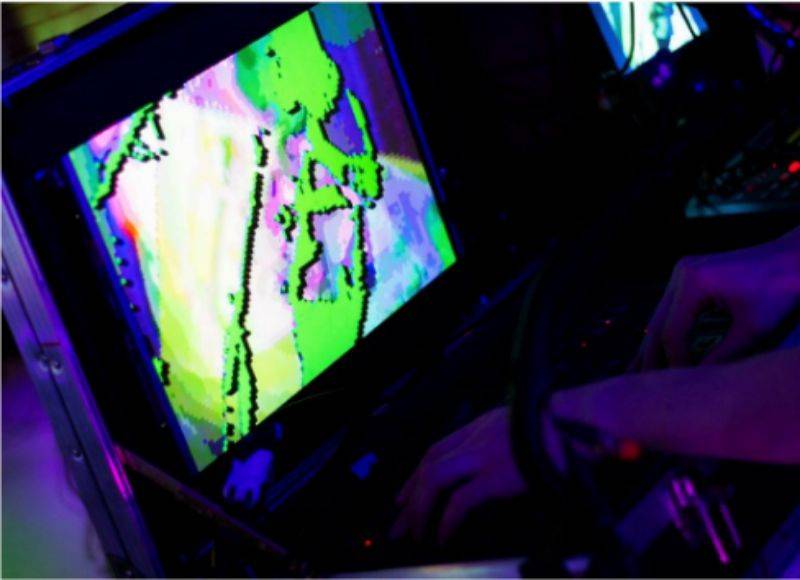These days, Jake Metz can often be found on the second floor of his Urbana home, shrouded in darkness thanks to a makeshift room comprised of sheets and surrounded by an unnatural amount of speakers.
Burying himself in his makeshift nest for most of the year so far, Metz has erected a complex, immersive sound system that caters to the ear like few others.
Actually, Metz’s 16-speaker arrangement is one of only a few creations of its kind in the United States.
Spatial sound flows around the ears, from behind to overhead, creating a superior atmosphere of sound compared to normal sound systems. The thing about sound immersion is that the equipment and setups needed to create quality systems are costly, complicated and can be thrown off even by a slight error. Metz wants to bring the quality of immersive sound to Champaign-Urbana, and thus, his idea of Immersion Festival was conceived.
“I’m trying to expose more people to it, trying to bring it here to Champaign-Urbana, some of these things I’ve seen around the country and the world,” Metz said. “The other half of it is to catalyze and inspire other artists.”
The first edition of Immersion Festival is set to commence at the IMC on May 3 and 4, as Metz will put his self-made, 16-speaker sound dome installation to the test. Immersion Festival will consist of two days of live and pre-recorded performances, workshops, visual arts displays, video arts projections and of course, the sound dome. Metz is tailoring the event to showcase an eclectic variety of acts, primarily those blurring genre lines and continuing to innovate with immersive sound.
“The people who are playing at Immersion, you probably wouldn’t necessarily see at the other festivals or other collections of music in town,” Metz said. “It’s not limited to any one genre. Some of it is going to be pretty far out. But really, it’s for anyone who’s making art that is operating at the boundaries, or the fringes, trying to push against the boundaries of what their genre or medium is defined as generally.”
Sponsored in part by a City of Urbana arts and culture grant, Immersion Festival will feature workshops that center on immersive media, experimental media and video and audio synths during the day. At 5:00 p.m. on each day, experimental music performances will begin, and those in attendance will be able to take them in from inside the sound dome.
Announced acts on the main stage, which will host the live performances, include the Kakarala Ensemble, the Finkelman Quartet, Owlson, TATWD and Strick Lee, while arrangements from Skot Wiedmann, Eli Fieldsteel and Uusky will be played in the dome. To listeners, it will sound as if the arrangements are flowing from all around them, which they will be.
“What (sounds) you perceive will (move) because your ears are moving,” Metz said. “So the sound is coming from different directions around you.”

Photo from Facebook event page
A journeyman of sound
Metz has literally crossed the country and an ocean as his interest in quadraphonic sound transformed into deep interest in spatial sound. Before he set off to learn what he could though, Metz got his degree in electrical engineering from Illinois — where he works during the day, managing the Undergraduate Library’s Media Commons. He recorded and engineered others’ music and played in a few bands himself, including an alien-impersonating group called JORTS. Metz, now 30, prefers to amplify the work and sounds of others though, and when he decided to no longer spend much time on his band projects, his interest in spatial sound grew steadily.
In 2015, Metz was getting seriously into quadraphonic sound, which boomed in the ‘70s and fizzled out as a consumer product decades ago. He doesn’t really recall how that interest started, but he does know where it grew into something more.
“I think I had always known about Pink Floyd doing quadraphonic stuff in the 1970s,” Metz said. “They had like a joystick and you spin stuff around, I knew that that had happened. I don’t remember back four-plus years ago what actually led me into doing this. I think maybe I saw a quadraphonic performance at Moogfest (in Durham, North Carolina).”
When he returned to the area, he began exploring quadraphonic sound and live events that incorporated it.
“Because it was so kludgy is what led me to keep pursuing it,” Metz explained. “I was like, ‘I want to do this a better way.’ So I put on a couple shows like that, then I decided I wasn’t going to do any more until I had a better system.”
As he continued to learn, Metz built his own Eurotrack modular synthesizer, which allowed him to take much more expressive control over quadraphonic sound, and eventually, immersive sound. He put on a few more quadraphonic events, including a yoga class, and Expressions, a multimedia art event that showcased underground talent with “a shared theme of experimental and psychedelic expression”. Then it came time for Moogfest again in 2017. There, he encountered a workshop on spatial sound with a massive, 24-speaker array in action.
“I was just like, ‘What the hell is this?’ All the sudden quadraphonic (sound) feels woefully inadequate,” Metz said. “These folks were from Virginia Tech and they have a facility there called the Cube that has 148 loudspeakers in it. They have a festival called Cube Fest.”
Metz met and made connections with people at Virginia Tech who shared his interests in an academic sense, but he wanted to push immersion beyond displays and into an interactive setting. Now, he’s been to Berlin, San Francisco and basically everywhere that’s anywhere when it comes to spatial soundscapes.
In rare form
With the rise of virtual reality technology and Ableton 10’s Envelope program — which lets artists and producers engage with spatial sound without needing all the technical background — immersive sound is getting more and more accessible for normal people.
Still though, Immersion Festival is a one-of-a-kind affair in the Midwest.
“It’s becoming more accessible, and I think it will continue to,” Metz said. “But as far as popular music venues, there is not much.”
Ultimately, what he wants people in Champaign-Urbana to see in the event is an opportunity to interactively engage with a unique sonic experience, while exploring and appreciating underexposed, underground art from genre-pushing creators. It’s not about money — though the festival accepts and will rely on suggested donations — and it’s not about recognition for Metz. He’d love to sit back and say he’s the guy who brought two artists together that created something truly innovative, or that he sparked the interest of a young creative in immersive and spatial sound.
“There is kind of a two-fold purpose for this festival,” Metz said. “A: I have spent a long time learning about all this and I want to bring these things back to our town here and show people something they’ve never seen.”
From there, he plans to keep learning himself and developing better and better spatial sound systems.
“I have a larger mission to figure out, design and put my designs for spatial sound systems out there along with parts lists and software templates so people can just build their own and go and do things,” he said. “I want this to come out of academia, I want it to explode into the world.”









